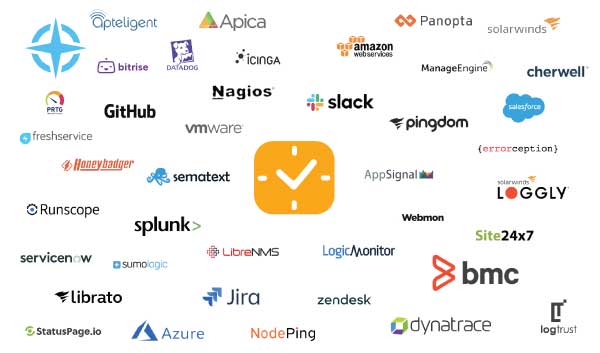Managed service providers (MSPs) face ransomware, malware, and other cyber attacks — and these issues can affect both MSPs and their clients. To understand the full impact of an MSP cyber attack, let’s examine the topic in more detail.
What is an MSP Cyber Attack?
Businesses use MSPs to manage IT infrastructure and other resources. In doing so, businesses outsource the maintenance and care of applications, networks, security, and other aspects of their IT operations to a third-party.
MSPs are becoming key to global organizations across all industries, and the global MSP market looks poised to grow. Research indicates that the global managed services market was worth approximately $107 billion last year. This sector is also expected to generate more than $193 billion in revenues by 2024.
Although MSPs can simplify an organization’s IT operations, they are susceptible to cyber attacks. This is due to the fact that an MSP typically operates in the same way as any other business. Therefore, if an MSP does not properly safeguard its internal IT infrastructure, hackers may access its crucial data and systems. A MSP cyberattack, the damage can escalate to the point where it affects both the service provider and its clients.
How Does a Cyber Attack Affect an MSP and Its Clients?
Cybercriminals can disrupt or take down an MSP’s systems using phishing emails, distributed denial-of-service (DDoS), and other sorts of cyberattacks. Comparatively, cybercriminals can launch cyberattacks in which they can illegally access or control an MSP’s sensitive data or systems. In any of these instances, the consequences for an MSP and its customers can be severe.
If a cybercriminal hampers an MSP’s ability to remotely monitor and manage a customer’s IT infrastructure, the service provider may struggle to fulfill its customer’s IT requirements. In this scenario, the MSP may lose control of its customer’s applications, networks, and systems. The result: the MSP’s customer may lose access to these applications, networks, and systems until the service provider identifies and resolves the issue.
Along with hindering an MSP’s ability to deliver IT services, a cyber attack can put the critical data of the service provider and its customers in danger. For instance, if an MSP employee clicks on a malicious link in a phishing email, he or she may inadvertently open the door for a cybercriminal to access the service provider’s data and systems. This can lead to a data breach that causes substantial damage to the MSP’s brand reputation and revenues. It can also result in compliance penalties in instances where an MSP does not meet the requirements of the General Data Protection Regulation (GDPR) or other data security mandates.
Tips to Address MSP Cyber Attacks
Cybercriminals are increasingly targeting MSPs, and service providers must plan accordingly. Fortunately, there are several things that MSPs can do to improve their cybersecurity posture, including:
1. Teach Employees About Cybersecurity
Research shows that MSPs and their small and medium-sized business (SMB) customers are often unprepared when it comes to cyber attack planning, management, and mitigation. However, there are tools and resources that assist MSPs in cybersecurity awareness programs and informing their staff about online dangers. SMBs and other MSP clients may be taught about cyberattacks and the risks they pose using these tools and resources.
The U.S. Cybersecurity & Infrastructure Security Agency (CISA) offers guidance to help MSPs and their customers keep pace with current and evolving cyber threats. In addition, MSPs can track cybersecurity news and watch for updates regarding new cyber attacks. MSPs develop and implement cybersecurity programs to stop cyber attacks before they get out of hand. MSPs can use these programs to educate both employees and customers about cyber threats, too.
2. Identify Cyber Risks
Cyber risk varies based on the size of an MSP, the third-party vendors it works with, and other factors. The service provider must do a thorough risk assessment to ascertain the degree of cyber risk inside an MSP.
The National Institute of Standards and Technology (NIST) offers a framework that MSPs can use to conduct a comprehensive risk assessment. MSPs use this framework to determine which cyber risks are present and how to close gaps that leak critical data. Furthermore, MSPs can leverage the risk assessment results to prioritize myriad risks and ensure all data and systems are secure.
3. Find the Right Cybersecurity Tools
Cybersecurity tools are readily available, and the sheer volume of options available to MSPs can be overwhelming. If MSPs understand the cyber risks they face, they can find tools to guard against these dangers. Plus, MSPs can integrate cybersecurity tools into their everyday operations, teach employees how to utilize these tools, and minimize the risk of cyber attacks that can contribute to data breaches, downtime, and outages.
One of the top response tools available to MSPs today is the AlertOps and ConnectWise Manage integration. MSPs can use this integration to forward ConnectWise Manage tickets to AlertOps as alerts and increase visibility across the ticket lifecycle. They can also leverage the integration to automatically create an alert in AlertOps and a ticket in ConnectWise Manage at the same time, ensure changes are reflected in both AlertOps and ConnectWise Manage any time actions are taken in either platform and more.
Take it to the Next Level
No organization is immune to cyber attacks, even MSPs. With the proper approach to cybersecurity, MSPs can protect themselves and their customers against cyber threats. MSPs can also leverage cybersecurity tools and resources to stop cyber attacks before they cause long-lasting damage.
To lessen the impact of cyberattacks, AlertOps provides an incident management platform that MSPs can use with ConnectWise Manage. With the AlertOps-ConnectWise Manage integration, MSPs can manage notifications and escalations for tickets based on various priorities, resulting in faster cyber attack identification, remediation, and resolution.







